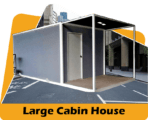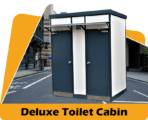
Discover the Best Tiny House Communities for a Thriving Minimalist Lifestyle
Table of Contents
- Introduction: Embracing Minimalism and Tiny House Living
- Benefits of Tiny House Communities
- Factors to Consider When Choosing a Tiny House Community
- The Best Tiny House Communities Worldwide
- 4.1. Community A: Sustainable Haven in the Countryside
- 4.2. Community B: Urban Oasis for Tiny House Enthusiasts
- 4.3. Community C: Coastal Retreat with a Minimalist Vibe
- 4.4. Community D: Off-Grid Living in the Wilderness
- 4.5. Community E: Eco-Friendly Haven in a Vibrant City
- Transitioning to a Tiny House Lifestyle
- 5.1. Planning and Downsizing
- 5.2. Design and Organization
- 5.3. Adapting Mindset
- 5.4. Community Engagement
- Conclusion
- FAQs (Frequently Asked Questions)
1. Introduction: Embracing Minimalism and Tiny House Living
In a world consumed by excess, many people are seeking a simpler and more sustainable way of living. Embracing minimalism and transitioning to a tiny house lifestyle can be the answer. Tiny houses offer a unique opportunity to downsize your living space while maximizing your quality of life. By living in a tiny house, you can declutter your physical and mental space, reduce your environmental footprint, and focus on the things that truly matter.
2. Benefits of Tiny House Communities
Tiny house communities take the concept of minimalism a step further by creating supportive environments where individuals can thrive together. Here are some key benefits of living in a tiny house community:
- Shared Resources: Tiny house communities often have shared spaces and resources such as communal gardens, tool libraries, and community centers. This collaborative approach fosters sustainability, promotes a sense of belonging, and allows residents to maximize their living experience.
- Supportive Community: Living among like-minded individuals who appreciate the value of simplicity can provide a strong support network. Tiny house communities often organize social events, workshops, and gatherings where residents can exchange ideas, offer support, and collaborate on projects.
- Affordability: Tiny houses are generally more affordable than traditional homes. Additionally, living in a tiny house community can further reduce costs through shared expenses such as land lease, maintenance, and utilities.
- Environmental Sustainability: With smaller living spaces and a focus on eco-friendly practices, tiny house communities contribute to a more sustainable future. Residents can embrace renewable energy sources, adopt environmentally conscious habits, and inspire others to follow suit.
3. Factors to Consider When Choosing a Tiny House Community
When selecting a tiny house community, it’s essential to consider several factors to ensure it aligns with your needs and preferences. Here are some important considerations:
- Location and Surroundings: Determine whether you prefer a rural, urban, or coastal setting. Consider the proximity to amenities, natural beauty, and the overall ambiance of the location.
- Community Values and Culture: Research the community’s values, rules, and culture. Ensure that the community’s ethos aligns with your own beliefs and expectations.
- Amenities and Shared Resources: Assess the availability of shared resources and amenities within the community. These can include communal spaces, gardens, recreational facilities, and educational opportunities.
- Community Rules and Regulations: Familiarize yourself with the community’s rules and regulations. This includes guidelines on tiny house design, maintenance responsibilities, and community participation requirements.
- Accessibility to Basic Services: Consider the accessibility to essential services such as healthcare, grocery stores, and transportation options. Determine whether the community’s location meets your daily needs.
4. The Best Tiny House Communities Worldwide
While there are numerous tiny house communities worldwide, here are five outstanding communities that offer unique experiences for those seeking a thriving minimalist lifestyle:
4.1. Community A: Sustainable Haven in the Countryside
Located amidst picturesque countryside, Community A offers a serene and sustainable living experience. With an emphasis on organic farming, renewable energy, and eco-friendly practices, this community provides residents with an opportunity to reconnect with nature while living in beautifully designed tiny homes.
4.2. Community B: Urban Oasis for Tiny House Enthusiasts
For those who prefer an urban setting, Community B is an ideal choice. Situated in the heart of a bustling city, this community showcases the integration of tiny homes into the urban landscape. Residents enjoy proximity to cultural attractions, vibrant neighborhoods, and a thriving local community.
4.3. Community C: Coastal Retreat with a Minimalist Vibe
Community C offers a coastal retreat where the minimalist lifestyle harmonizes with the soothing sounds of the ocean. Nestled along the shoreline, this community provides residents with breathtaking views, access to water activities, and a strong sense of camaraderie among fellow tiny house enthusiasts.
4.4. Community D: Off-Grid Living in the Wilderness
If you yearn for an off-grid lifestyle surrounded by untouched wilderness, Community D is an excellent choice. Located in a secluded area, this community emphasizes self-sufficiency, connection with nature, and sustainable practices. Residents enjoy the beauty of the natural surroundings while engaging in activities such as hiking, wildlife conservation, and permaculture.
4.5. Community E: Eco-Friendly Haven in a Vibrant City
Community E offers the best of both worlds—an eco-friendly haven within a vibrant cityscape. This community combines the benefits of urban living with a sustainable approach. Residents have access to sustainable transportation options, green spaces, and a strong sense of community engagement.
5. Transitioning to a Tiny House Lifestyle
Transitioning to a tiny house lifestyle requires careful planning and preparation. Here are some essential tips to help you navigate this change successfully:
5.1. Planning and Downsizing
Before moving into a tiny house, plan your transition carefully. Assess your belongings, declutter ruthlessly, and prioritize the essentials. Make a detailed inventory of what you truly need and consider creative storage solutions to maximize space efficiency.
5.2. Design and Organization
Optimize your tiny house’s design to suit your lifestyle and preferences. Consider multifunctional furniture, space-saving techniques, and smart organization solutions. Maximize vertical space and use every nook and cranny effectively.
5.3. Adapting Mindset
Embracing a minimalist mindset is crucial for a successful transition. Let go of materialistic attachments and focus on experiences and relationships rather than possessions. Embrace the freedom and simplicity that a tiny house lifestyle can provide.
5.4. Community Engagement
Active participation in the tiny house community is key to a thriving lifestyle. Get to know your neighbors, participate in community events, and collaborate on projects. Sharing resources, skills, and ideas can enhance your overall experience and create lasting connections.
6. Conclusion
Embarking on a minimalist lifestyle within a tiny house community can be a transformative experience. By choosing the right community, you can live sustainably, enjoy a strong sense of camaraderie, and find contentment in the simplicity of life. Explore the possibilities, evaluate your options, and select a tiny house community that resonates with your values and aspirations. Embrace the journey of living with less and discover the beauty of a thriving minimalist lifestyle.
FAQs (Frequently Asked Questions)
1. Are tiny houses legal in all locations?
Tiny house regulations vary depending on the location. It’s important to research local zoning and building codes to ensure compliance before establishing a tiny house.
2. How much does it cost to build a tiny house?
The cost of building a tiny house depends on various factors such as size, materials used, and location. On average, it can range from $20,000 to $100,000 or more.
3. Can I have pets in a tiny house community?
Pet policies may vary among different communities. Some may have restrictions on the number or size of pets allowed, while others may be more lenient. It’s essential to inquire about pet policies before joining a community.
4. What are the maintenance requirements for a tiny house?
Tiny houses generally require less maintenance compared to larger homes. However, regular upkeep such as cleaning, repairs, and occasional renovations may still be necessary.
5. How do I find a tiny house community near me?
You can start by researching online platforms dedicated to tiny house communities, attending tiny house events or workshops, and connecting with local sustainable living organizations to find information about communities in your area.
In conclusion, tiny house communities offer an exciting opportunity to live a fulfilling minimalist lifestyle. With their shared resources, supportive environments, and focus on sustainability, these communities provide a thriving space for individuals seeking a simpler and more intentional way of living. By considering the outlined factors and tips, you can find the perfect tiny house community and embark on a journey of discovering the beauty of minimalism.
Desain Rumah Kabin
Rumah Kabin Kontena
Harga Rumah Kabin
Kos Rumah Kontena
Rumah Kabin 2 Tingkat
Rumah Kabin Panas
Rumah Kabin Murah
Sewa Rumah Kabin
Heavy Duty Cabin
Light Duty Cabin













